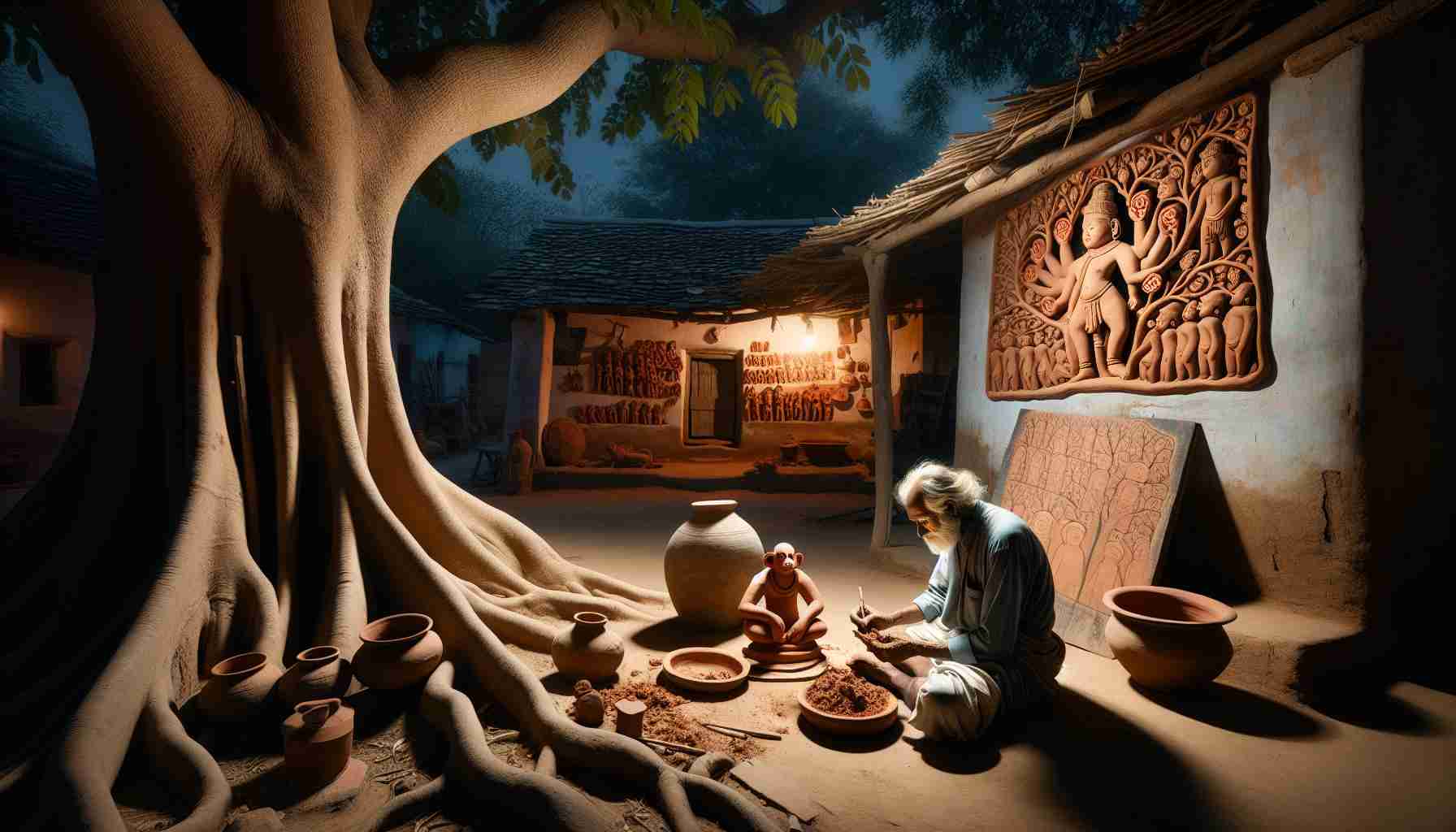

I am Aarav, son of a potter from Kaushambi, a small village nestled near the banks of the holy Yamuna River.
For as long as I can remember, I wanted to be a temple artisan. Not just shaping clay pots, but carving the sacred stories of our gods onto temple walls. When I was twelve, I saw the towering shikhar of the Krishna mandir in Mathura for the first time. I stood with clay-stained hands, heart stretched wide with a dream I couldn't name then.
Every night after shaping pots, I drew with bits of charcoal—lotuses, cows, Krishna’s flute. I carried those drawings in a satchel of old cloth. When the village elders laughed, my father said nothing, but I sometimes caught him looking at my hands like he saw something I hadn’t.
At nineteen, I walked to Mathura with a bundle and a heart full of hope. But the temple gates? Closed. They only hired trained artisans with names and guilds. I had neither. For weeks, I offered to sweep the temple floors just to stay close. “Come back when life has carved you too,” an old sculptor said, half-kind, half-dismissive.
I returned home heavy. My brother needed help at the kiln. My aging father grew quiet. Years crept by in smoky days and silent evenings. My dreams felt foolish by thirty, then selfish by thirty-five.
One stormy night, I sat under the peepal tree by our courtyard, the rain cold on my skin. I remembered this verse from the Bhagavad Gita (Chapter 2, Verse 47): “You have the right to perform your duty, but not to the fruits of your actions.” I had chased the fruit too hard, I realized. Art had become a means to be seen, not to serve.
That week, a schoolteacher asked if I could decorate their new classroom altar with stories of Hanuman — the humble devotee of Lord Rama. I said yes without thinking.
Something shifted.
Children watched, wide-eyed, as I shaped Hanuman leaping across the ocean from bits of red clay. They clapped when I etched Rama’s bow and heard for the first time how even mighty warriors waited patiently for their destiny to unfold—just as Rama did during his exile. (Ramayana)
Soon, village homes began to ask me for mural panels. Not grand temples—but hearts were opening. One girl whispered, “Your clay shows me the gods live here too.”
A few months ago, a Mathura sculptor passing through saw one of my village panels. He asked me to come help with the repairs of Krishna’s temple arch. I held my breath. Thirty years of waiting.
But I didn’t cry out or shout like I imagined I would. I just bowed my head, like Shiva in deep meditation, calm and still. (As the Vedas say, Silence is the speech of the wise.)
Destiny, I’ve learned, is like Ganga in winter—slow, hidden, but always flowing.
Even when our dreams seem forgotten, the Divine remembers.
I am Aarav, son of a potter from Kaushambi, a small village nestled near the banks of the holy Yamuna River.
For as long as I can remember, I wanted to be a temple artisan. Not just shaping clay pots, but carving the sacred stories of our gods onto temple walls. When I was twelve, I saw the towering shikhar of the Krishna mandir in Mathura for the first time. I stood with clay-stained hands, heart stretched wide with a dream I couldn't name then.
Every night after shaping pots, I drew with bits of charcoal—lotuses, cows, Krishna’s flute. I carried those drawings in a satchel of old cloth. When the village elders laughed, my father said nothing, but I sometimes caught him looking at my hands like he saw something I hadn’t.
At nineteen, I walked to Mathura with a bundle and a heart full of hope. But the temple gates? Closed. They only hired trained artisans with names and guilds. I had neither. For weeks, I offered to sweep the temple floors just to stay close. “Come back when life has carved you too,” an old sculptor said, half-kind, half-dismissive.
I returned home heavy. My brother needed help at the kiln. My aging father grew quiet. Years crept by in smoky days and silent evenings. My dreams felt foolish by thirty, then selfish by thirty-five.
One stormy night, I sat under the peepal tree by our courtyard, the rain cold on my skin. I remembered this verse from the Bhagavad Gita (Chapter 2, Verse 47): “You have the right to perform your duty, but not to the fruits of your actions.” I had chased the fruit too hard, I realized. Art had become a means to be seen, not to serve.
That week, a schoolteacher asked if I could decorate their new classroom altar with stories of Hanuman — the humble devotee of Lord Rama. I said yes without thinking.
Something shifted.
Children watched, wide-eyed, as I shaped Hanuman leaping across the ocean from bits of red clay. They clapped when I etched Rama’s bow and heard for the first time how even mighty warriors waited patiently for their destiny to unfold—just as Rama did during his exile. (Ramayana)
Soon, village homes began to ask me for mural panels. Not grand temples—but hearts were opening. One girl whispered, “Your clay shows me the gods live here too.”
A few months ago, a Mathura sculptor passing through saw one of my village panels. He asked me to come help with the repairs of Krishna’s temple arch. I held my breath. Thirty years of waiting.
But I didn’t cry out or shout like I imagined I would. I just bowed my head, like Shiva in deep meditation, calm and still. (As the Vedas say, Silence is the speech of the wise.)
Destiny, I’ve learned, is like Ganga in winter—slow, hidden, but always flowing.
Even when our dreams seem forgotten, the Divine remembers.